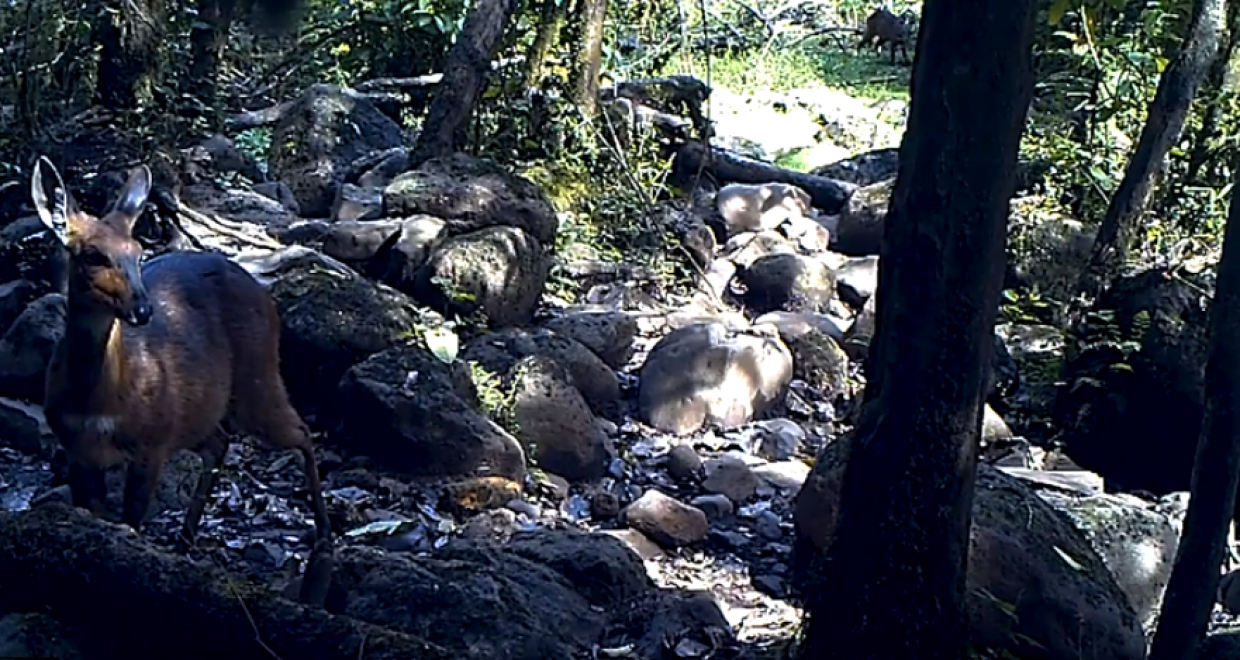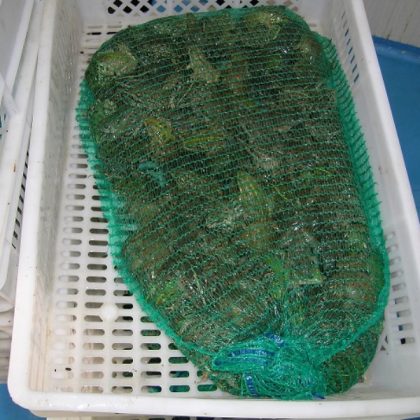Intensifying natural forest for coffee production affects mammals in Ethiopia
Researchers of the Biodiversity Inventory for Conservation (BINCO) found that intensification of natural forest for coffee production alters large mammal communities.
The study, published in Oryx – The International Journal of Conservation, finds that although overall species diversity is similar in natural vs coffee forests, large and medium-sized carnivores are the first to disappear when forests are used for coffee cultivation, and diurnal activity patterns switch to nocturnal. The increased accessibility of coffee forests for humans decreases diurnal activity of large mammals and specifically affects the top predators in the ecosystem.
Earlier studies have shown that Ethiopian coffee forest, the birthplace of coffee, is one of the most biodiverse in the world in terms of bird species (Buechley et al., 2015). This research now shows a similar situation for mammals, with overall mammal diversity in coffee forest being comparable to that of mature natural forest. Little undisturbed forest remains in Ethiopia because of high international demand for coffee, which requires ongoing intensification of natural forest. Coffee has been cultivated as a shade crop for more than 1,000 years, and it is important for mammal conservation to preserve this type of low-disturbance coffee forest.

Although Ethiopia is known for its high number of endemic animal and plant species, conservation activities on the local scale are limited. Natural forest is in continuous decline as agricultural lands expand, resulting in a significant loss of biodiversity. Coffee forest, however, has long been proposed as a more sustainable agricultural system, conserving biodiversity while providing income for local communities.

The study used camera trapping to compare communities of large mammals between natural forest and extensively managed coffee forest for the first time in the south-west Ethiopian highlands. The findings show that large carnivores such as leopard and African civet tend to prefer natural forest, while crested porcupine and Ethiopian hare are typically associated with coffee forest. The latter two are uncommon forest visitors and their presence could be related to increased forest accessibility and a well-developed herb layer in coffee forest.
Mammal activity in natural forest peaked during daytime. This pattern was mostly reversed in coffee forest where most activity was crepuscular and nocturnal. Forest buffalos and leopards, for example, were only observed at night in coffee forest, possibly an adaptation to human activity during the day. Despite the high mammal diversity in coffee forest, this indicates that it cannot fully replace natural forest as a habitat for large mammals. The researchers conclude that a balanced landscape mosaic of coffee and natural forest may be a valuable conservation option, contributing to local economy while safeguarding the diversity of large mammals. Moreover, in more disturbed areas, coffee forests can serve as buffer areas and corridors surrounding and connecting patches of natural forest.
The paper ‘From natural forest to coffee agroforest: implications for large mammal communities in the Ethiopian highlands’ is now freely available until 31st December in Oryx – The International Journal of Conservation.
Photo credit: M. De Beenhouwer
BINCO published a short video compilation of camera trap footage showing some of the mammals living in the Belete-Gera forest. You can watch it here
BIODIVERSITY INVENTORY FOR CONSERVATION (BINCO): BINCO is a Belgium-based, but internationally engaged, non-profit organisation. Founded in 2008, BINCO specialises in biodiversity assessments and monitoring, focussing on poorly studied regions and species. It aims to compile crucial knowledge of the biological world through targeted field research in support of conservation NGOs, government and others to help make informed decisions to protect the natural capital in this world.





